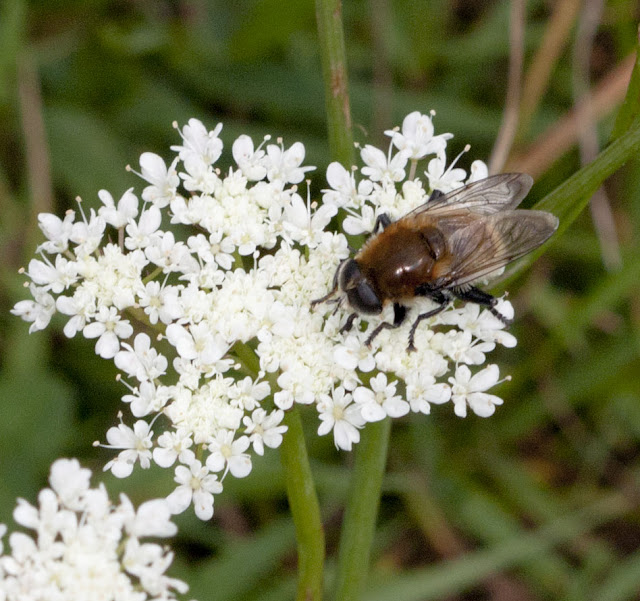 |
| Greater Bulb-fly, Merodon equestris, on ox-eye daisy, Leucanthemum vulgare. Hayes Common, 21 May 2011. |
I saw another imitator on a day when we were actually looking for bumblebees. I could see this wasn't one from its colour, which is unlike any of our local bumblers. It's actually another of the same species of hoverfly, which is variable as to body colour.
The common name, Greater Bulb-fly, was given because its larvae feed on lily and narcissus bulbs. Most hovefly larvae feed on aphids, but this species isn't among the goodies.
 |
| Hoverfly, Merodon equestris, on corky-fruited water dropwort, Oenanthe pimpinelloides. Jubilee Country Park, 19 June 2011. |
No comments:
Post a Comment